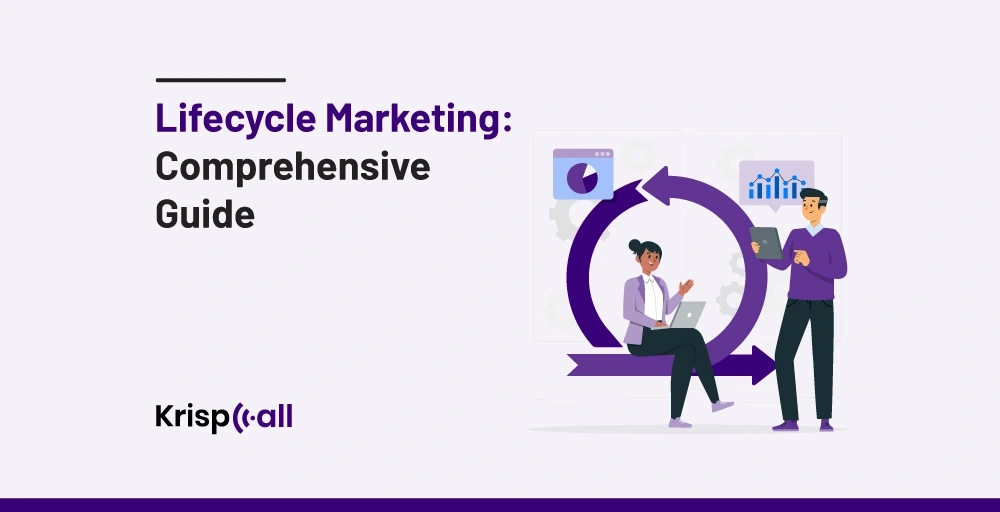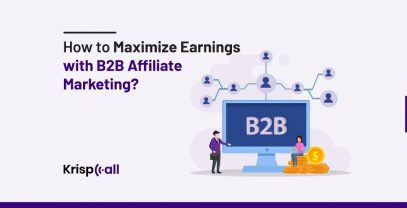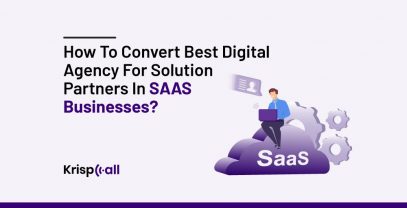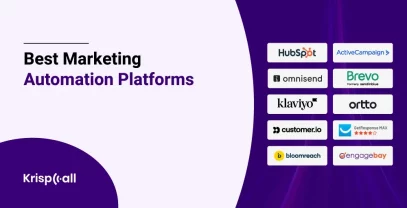The best marketers know it’s rare for them to win customers right away. So, creating a customer lifecycle requires time, thoughtful touchpoints, and a lot of trust – and that’s what makes lifecycle marketing so important.
While every business develops its own unique lifecycle marketing strategy, the goal is the same: to engage customers, grow revenue, and build a brand. When it comes to lifecycle marketing, a customer is considered long after he or she makes a purchase, in contrast to the buyer’s journey or conversion funnel. A brand’s goal is to attract buyers and make them loyal customers. 👏
In this article, we’ll explore how you can effectively target and engage customers at all stages of their journey, turning them from one-time purchasers into lifelong brand champions. We’ll also discuss the strategies and tips that will help you level up your marketing strategies so that you can maintain continuous growth and customer satisfaction. 🎉
🔐KEY HIGHLIGHTS
- Lifecycle marketing is a mix of strategies used by businesses to influence customer behavior positively throughout the marketing cycle.
- The strategy of lifecycle marketing is to target clients by understanding preferences, attract them with compelling content and targeted strategies, capture attention effectively, engage with personalized communication, offer solutions and incentives, close sales with clear calls to action, deliver exceptional service, and impress with high standards.
- The best practices of lifecycle marketing are to automate tasks at different stages of your business process, input your clients into your CRM system, tailor communication to fit each client’s needs, and spot potential risks of losing customers using segmentation.
- The benefits of lifecycle marketing are improved customer retention, increased customer lifetime value, reduced costs, enhanced customer experience, higher conversion rates, better marketing ROI, and increased brand engagement.
What is lifecycle marketing?
Lifecycle marketing is a mix of strategies used by businesses to influence customer behavior throughout the marketing cycle positively. It encompasses a range of techniques designed to attract, engage, convert, and retain customers.
It is about leveraging real-time data, personalization, and marketing automation to send the right message to the right customer at the right time across various channels like email, social media, content marketing, SEO, and PPC.

A lifecycle can either be short-term or long-term; however, it depends on one’s own goals and objectives. Or else, you can determine if you need to attract people back almost immediately after they purchase, and short-term marketing is used. On the other hand, if your company wants to have customer retention and advocacy to bring more business, a long-term marketing lifecycle is used.
Nonetheless, all types of lifecycle marketing are about building a network of loyal customers who make repeat purchases and become brand advocates.
What are the strategies of lifecycle marketing?
Implementing effective lifecycle marketing involves adhering to best practices that ensure seamless customer engagement and optimized marketing efforts. Here’s a detailed look at the strategies of lifecycle marketing:
1. Target clients by understanding preferences
As mentioned earlier, the key to successful lifecycle marketing lies in knowing your customers and their wants and needs. To understand your customers better, you can gather detailed information about them by analyzing their interactions on the website, social networking sites, and previous purchases.
Such insights are typically helpful in segmenting the audience into various categories so that the marketing strategies can fit the needs of each. Moreover, this targeted approach enhances the effectiveness of your marketing messages because customers feel that their needs are being understood. And if you target your clients by understanding their preferences, there’s a chance that 56% of your customers will stay loyal to your brand.
2. Attract with compelling content and targeted strategies.
Once you know who your target audience is, the next stage is to grab their attention with content and marketing messages that appeal to them. So, develop content that resonates with customer concerns, hobbies, or wish lists. Also, ensure that your blog posts, videos, social media updates, and advertisements offer useful information and solutions that they find relevant.
Furthermore, specific advertising techniques like search engine optimization (SEO), pay-per-click (PPC), and social media marketing can be used to reach the targeted people when they are most active. In this way, you can present articles and other materials that will engage the intended audience and lead them to your products.
3. Capture attention effectively
Engaging the audience is not only about reaching people who may be interested in a product but also helping them remain interested just long enough to transition them. So make sure you have a good graphic design, interesting headlines, and special features on your website and other advertising tools.
So, use strategies like lead generation—which can be done via an eBook, a webinar, or an offer that captures a person’s attention effectively. That way, you will be able to engage the visitors and turn them into leads who show an interest in what you offer.
4. Engage with personalized communication
Another important strategy, which is highly related to the mass-cultivation approach, is the need for multichannel marketing with potential buyers and their further stimulation.
So, utilize the collected data to engage in targeted email marketing, customized messages, or recommendations. In addition, you can address customers individually to make them realize that you are interested in them and their specific needs.
5. Offer Solutions and incentives
At each step of the customer’s journey, it is essential to provide products that meet the customer’s needs and the problem at hand. Show them how your products work to solve their problems through detailed descriptions of products, examples of specific clients, and customer references.
Furthermore, reward them with bonuses, free items, services, products, or discounts. Also, you can do promotions, such as limited-time offers that make the customer anxious to make a decision and get closer to a sale.
6. Close sales with clear calls to action
When it comes to converting the leads into paying customers, one needs to include a persuasive call to action. Make sure that your Call to Action (CTA) is well placed on your website, emails, and your marketing campaigns.
You can also write in action-related language, including words like ‘Buy Now,’ ‘Sign Up,’ ‘Get Started,’ etc. Most importantly, minimize the steps that your customers have to go through to complete a purchase.
7. Deliver exceptional service
Having closed a deal is not the end of the customer’s journey. So, it is important to ensure that the customers receive excellent service so they can stay with the firm for longer periods. Furthermore, you must focus on offering excellent customer service, delivering goods on time, and contacting the buyers to confirm that they are satisfied with the product they made.
Moreover, providing high-quality service strengthens customer confidence and also helps to assure them that they are valued. Thus, as a result they are likely to patronize the business again and recommend others to do the same.
8. Impress with high standards
Delivering more than what is expected from the customers is the formula to winning their hearts and making them your brand ambassadors. Adopt high levels of Corporate Governance and ensure that your company reflects this in all its aspects, including product offering and customer relations.
Know when and how to seek feedback and incorporate it into your work. When buyers note that you operate with professionalism and go out of your way to improve what they get, 86% of them are willing to pay more for a great customer experience, and they are more likely to stick with your brand.
What are the best practices of lifecycle marketing?
Implementing effective lifecycle marketing involves adhering to best practices that ensure seamless customer engagement and optimized marketing efforts. Here’s a detailed look at these best practices:
1. Automate tasks at different stages of your business process.
It is not just the marketing field that can benefit from the mechanization of work. Automate several business activities at various levels, such as selling, communicating with clients, and production.
For example, writing an automatic email with a thank you note after the purchase, setting or organizing service appointments, or changing the inventory stock. When automation is incorporated into overall business processes, you can gain a competitive advantage by minimizing errors and enhancing the quality of the customer experience.
In addition, automation can also help to save your team’s time and ensure they concentrate on core processes, processes that will lead to increased productivity.
2. Input your clients into your CRM system.
It is vital to update the CRM system frequently to ensure that your customer database is up-to-date with the latest client details. Remind your team to report any activity involving the customers, including questions, complaints, and feedback that your firm receives.
Through, reviewing and cleaning the data in the CRM at least once in a while can help you improve customer lifecycle management. Additionally, this can help you make the right decisions and develop better marketing strategies. So here, a well-maintained CRM system is the foundation of good lifecycle marketing, as it allows for targeted and data-driven communication.
3. Tailor communication to fit each client’s needs.
Ensure that all of the customer communication methods are constantly evolving and being optimized according to feedback and analytics. Keep track of how customers respond to various message types and delivery channels, and adjust your strategy based on this data.
For instance, if you observe that there are more reactions to emails than to posts on social media accounts, then you should probably concentrate more on emails. Hence, you could improve the overall impact of communication and your relationships with your target audience by paying attention to their preferences and patterns.
4. Spot potential risks of losing customers using segmentation.
Lifecycle marketing helps to spot the potential risk of losing your customer. To do this in a better way, use better quantitative tools and models, such as big data, analytics, and machine learning, to improve your segmentation. These can also provide a more accurate way of identifying at-risk customers and using predictive analytics to create adequate retention strategies.
For example, based on the customer’s past behavior, it is possible to predict what he or she is likely to do next and prevent the person from churning. The use of these strategies helps one to be prepared should any problems arise and be in a position to offer unique solutions to customers.
Benefits of lifecycle marketing
There are many benefits to having lifecycle marketing in your organizations; here are some:
- Improved Customer Retention: From initial awareness to post-purchase follow-up, Lifecycle marketing focuses on engaging with customers. So, through this engagement, businesses can provide a more personalized experience to their customer, leading to retaining customer loyalty and reducing churn rates.
- Increased Customer Lifetime Value: By nurturing relationships with customers throughout their journey via lifecycle marketing, you can encourage them to spend more with each purchase, thereby increasing their lifetime value
- Reduced Costs: It is a well-known fact that customer retention can increase profitability by up to 75% on average. Also, retaining existing customers is about five times less costly than acquiring new ones. And with lifecycle marketing, reducing operation costs becomes even easier.
- Enhanced Customer Experience: Addressing customer needs at each stage of the lifecycle not only fosters loyalty but also enhances the brand’s reputation. Happy customers are more likely to return and recommend the brand to others, creating a virtuous cycle of satisfaction and advocacy.
- Higher Conversion Rates: Targeted and personalized marketing efforts tend to have higher conversion rates, as they resonate better with customers who are more likely to engage and make purchases.
- Increased Brand Engagement: Satisfied customers who have been well-managed through the customer lifecycle can become brand advocates. As a result, it allows to spread of positive feedback and attracts new customers to the brand.
- Better Marketing ROI: Lifecycle marketing offers data-driven insights that help create more efficient and targeted marketing campaigns. This helps in increasing customer engagement and improving marketing ROI
Conclusion
Lifecycle Marketing is not just a concept on how to attract and retain customers but a process to turn prospects into brand champions. Thus, by recognizing the customer at each level of the process – from the moment when they are only aware of your company’s existence to the time they remain loyal to your business, you can build strong and profitable relationships.
Moreover, as the market shifts to data-driven experiences, you must use the power of data, personalization, and automation in your lifecycle marketing approach to create engaging experiences that are relevant to your customers. Do not forget that effective lifecycle marketing is all about building a relationship and providing value throughout the customer’s lifecycle.
FAQs
What is customer life cycle marketing?
Customer lifecycle marketing is a strategy that engages customers at every stage of their journey with a brand– from initial awareness to post-purchase advocacy.
What is customer life cycle marketing software?
Customer lifecycle marketing software is a tool that helps businesses manage and automate their marketing efforts across different stages of the customer journey. It ensures that there is personalized and timely communication between both parties: the customer and your team.
What are product life cycle marketing strategies?
Product lifecycle marketing strategies are introduction, growth, maturity, and decline. Adapting marketing strategies to each stage involves tailoring marketing efforts to the various stages of a product’s lifecycle.
Who is the life cycle marketing manager?
A lifecycle marketing manager is a professional responsible for developing and implementing strategies that engage customers throughout their journey with a brand.
What are life cycle marketing strategies?
Lifecycle marketing strategies are approaches used to engage customers at different stages of their journey with a brand. This includes attracting potential customers, engaging them with personalized communication, converting leads into sales, and retaining them through exceptional service and incentives.





